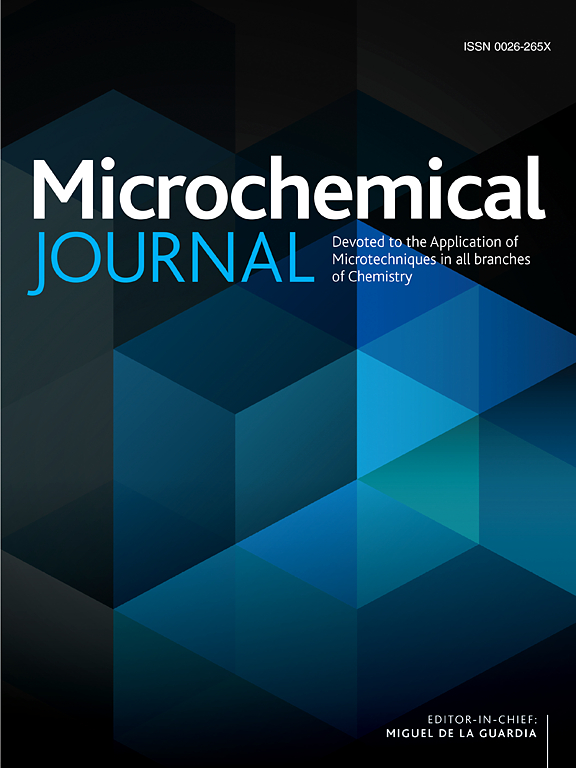金属氧化物在生物医学中的应用:成像、药物传递、组织工程和生物传感的进展
IF 4.9
2区 化学
Q1 CHEMISTRY, ANALYTICAL
引用次数: 0
摘要
金属氧化物纳米颗粒(MONPs)由于其独特的物理化学性质,包括高表面积、可调带隙和活性氧(ROS)的产生,在生物医学应用中引起了极大的关注。本文综述了MONPs的合成、功能化及其在生物医学上的应用,重点介绍了它们在成像、靶向给药、组织工程和生物传感等方面的作用。MONPs如Fe₃O₄、TiO₂、ZnO、CeO₂和MgO表现出优异的光学、磁性和催化性能,使它们非常适合用于多模态成像、治疗干预和再生医学。本综述的目的是评估基于monp的技术的现状,强调其优势、局限性和临床应用中的转化挑战。系统评估了MONP合成、表面工程和体外/体内研究的最新进展,以确定其在生物医学应用中的功效。结果表明,Fe₃O₄纳米颗粒能显著增强肿瘤成像的MRI对比度,而TiO₂和ZnO则能提高CT分辨率。功能化的MONPs通过pH和磁响应机制促进部位特异性药物递送,减少全身毒性并提高治疗效率。在组织工程中,MONPs通过减轻氧化应激和刺激细胞增殖来促进骨生成、神经再生和伤口愈合。此外,基于ZnO和TiO 2的生物传感器在葡萄糖监测、癌症生物标志物检测和传染病诊断方面表现出高灵敏度。尽管它们具有良好的生物医学潜力,但长期生物相容性、纳米颗粒聚集和大规模生产等挑战仍然是临床转化的关键障碍。通过优化合成策略、先进的功能化技术和集成到混合诊断和治疗平台来解决这些限制,对于在下一代医疗保健解决方案中实现monp的全部潜力至关重要。本文章由计算机程序翻译,如有差异,请以英文原文为准。

Metal oxides in biomedicine: Advances in imaging, drug delivery, tissue engineering, and biosensing
Metal oxide nanoparticles (MONPs) have garnered significant attention in biomedical applications due to their unique physicochemical properties, including high surface area, tunable band gaps, and reactive oxygen species (ROS) generation. This review aims to comprehensively evaluate the synthesis, functionalization, and biomedical applications of MONPs, focusing on their roles in imaging, targeted drug delivery, tissue engineering, and biosensing. MONPs such as Fe₃O₄, TiO₂, ZnO, CeO₂, and MgO exhibit exceptional optical, magnetic, and catalytic properties, making them highly suitable for multimodal imaging, therapeutic interventions, and regenerative medicine. The objective of this review is to assess the current state of MONP-based technologies, highlighting their advantages, limitations, and translational challenges in clinical applications. A systematic evaluation of recent advancements in MONP synthesis, surface engineering, and in vitro/in vivo studies was conducted to determine their efficacy in biomedical applications. Results indicate that Fe₃O₄ nanoparticles significantly enhance MRI contrast for tumor imaging, while TiO₂ and ZnO improve CT resolution. Functionalized MONPs facilitate site-specific drug delivery through pH- and magnetically responsive mechanisms, reducing systemic toxicity and enhancing therapeutic efficiency. In tissue engineering, MONPs promote osteogenesis, neural regeneration, and wound healing by mitigating oxidative stress and stimulating cellular proliferation. Furthermore, ZnO- and TiO₂-based biosensors exhibit high sensitivity for glucose monitoring, cancer biomarker detection, and infectious disease diagnostics. Despite their promising biomedical potential, challenges such as long-term biocompatibility, nanoparticle aggregation, and large-scale production remain critical hurdles for clinical translation. Addressing these limitations through optimized synthesis strategies, advanced functionalization techniques, and integration into hybrid diagnostic and therapeutic platforms will be essential for realizing the full potential of MONPs in next-generation healthcare solutions.
求助全文
通过发布文献求助,成功后即可免费获取论文全文。
去求助
来源期刊

Microchemical Journal
化学-分析化学
CiteScore
8.70
自引率
8.30%
发文量
1131
审稿时长
1.9 months
期刊介绍:
The Microchemical Journal is a peer reviewed journal devoted to all aspects and phases of analytical chemistry and chemical analysis. The Microchemical Journal publishes articles which are at the forefront of modern analytical chemistry and cover innovations in the techniques to the finest possible limits. This includes fundamental aspects, instrumentation, new developments, innovative and novel methods and applications including environmental and clinical field.
Traditional classical analytical methods such as spectrophotometry and titrimetry as well as established instrumentation methods such as flame and graphite furnace atomic absorption spectrometry, gas chromatography, and modified glassy or carbon electrode electrochemical methods will be considered, provided they show significant improvements and novelty compared to the established methods.
 求助内容:
求助内容: 应助结果提醒方式:
应助结果提醒方式:


